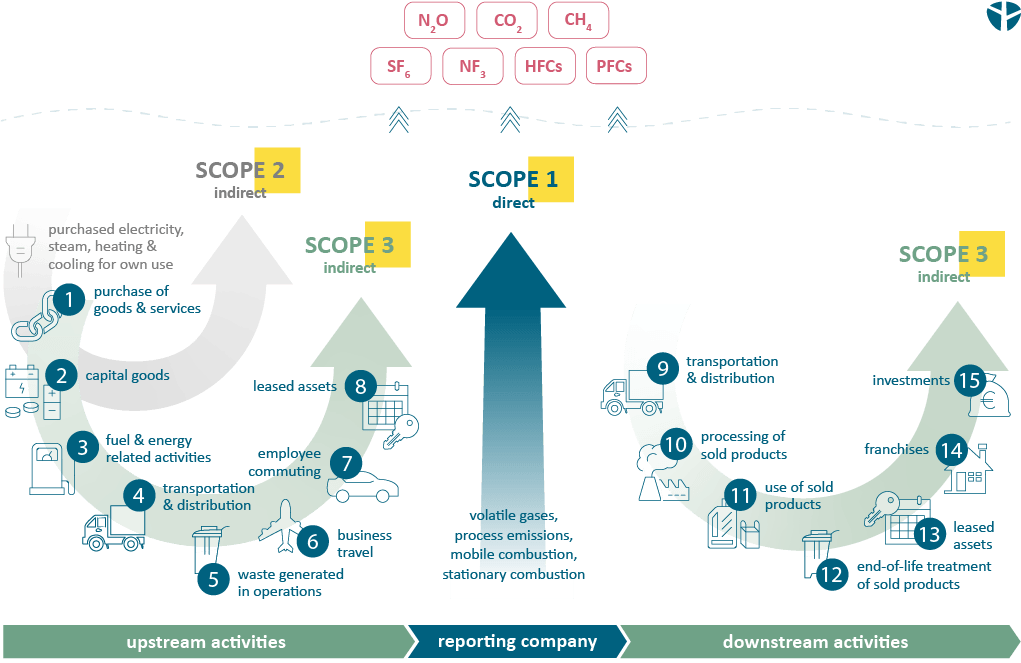FAQ
Frequently asked questions on CCF
What is a Ccorporate Carbon Footprint?
The Corporate Carbon Footprint is the amount of all emissions that a company is responsible for while operating. Not only is carbon included in the calculations, but other greenhouse gases like methane, nitrous oxide, and fluorocarbons are also considered. The CCF enables you to track your progress in emission reduction within your sustainability goals. Therefore, knowing your company’s footprint is crucial for your efforts towards being a sustainable business and your contribution to environmental protection, by setting science-based targets, for example.
How to calculate the Corporate Carbon footprint?
Before starting, the scope of the analysis has to be defined. The scope 1, 2, 3 emissions differentiate to which extent emissions are considered – whether only direct emissions are included or also indirect emissions caused by purchased goods or services along the value chain. The scopes are classified as followed:
- Scope 1 emissions are the company’s direct emissions only
- Scope 2 emissions are indirect emissions from purchased energy (sources)
- Scope 3 emissions include all indirect emissions being produced during upstream or downstream activities.
How can I improve my company’s carbon footprint?
Calculating your CCF is the first step in improving it because it enables you to assess your sustainability performance and identify critical processes within your company’s operations. With the calculated CCF as a basis, measures and roadmaps can be derived. Decarbonization strategies and frameworks like the Science Based Targets initiative (SBTi) or TCFD help you to set clear and feasible goals and reach them. After reducing your Scope 1, 2, 3 emissions, you can raise the bar higher than just CO2 reduction and aim for being a net zero company by becoming carbon neutral. Have a look at Net Zero strategies or feel free to contact us for further information. We are happy to help with integrating a decarbonization strategy into your existing business strategies!
What is the result of a carbon footprint calculation?
The result of the calculation – the footprint – is expressed in kilograms or tonnes of CO2e (CO2 equivalents).
What is the difference between carbon and water footprint?
The water footprint of a product is the volume of freshwater used to produce a product, measured over the full supply chain, showing water consumption volumes (evaporation or incorporation into the product) by source and polluted volumes by type of pollution.
The main difference to a carbon footprint is that in water footprinting the temporal and especially the spatial perspectives are very important since water is a local resource. Whereas the magnitude of the carbon footprint expresses impact, the water footprint expresses only intensity since the impact can vary a lot depending on the location where it occurs. Learn more about our water-related services.





